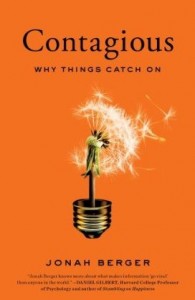Brands
Make Content, Not War: Using Negative Emotions in Content
Inspiring videos and funny blogs are the equivalent of polite party guests. At best, they’re hilarious, easy to interact with, and usually steer clear of religion and politics. It’s obvious why they’re popular. Negative content, on the other hand, is a lot trickier to get right.
When done wrong, controversial content can wreak havoc on a brand’s reputation — so it’s important to tread carefully. Just ask the folks at Belvedere.

“Anger and anxiety … make people share, but marketers are often afraid to use those emotions for fear it will drive people away,”says Jonah Berger, award-winning professor of marketing at Wharton University, and author of Contagious: Why Things Catch On, coming out in March. “When used correctly, they can be a big asset.”
If you’re going to rile up your audience, you better have a good reason.
Here are five things to remember when producing controversial content:
Focus on Shareability
Yes, it’s crucial that your prime target audience connects with your message — but it’s even more important to think ahead. Is your content something your audience would want to share within their network?
“Controversy makes things interesting to talk about, but it also creates discomfort,” Berger says. “So if something’s too controversial, people may shy away from sharing it with acquaintances or people they don’t know as well for fear of making them uncomfortable.”
Sharing is becoming yet another way for people to define themselves— an “about me” in link form—and users get selective about what they share. It’s why you block Aunt Viv from viewing that video from Virgin’s Naughty Campaign you posted on your friend’s wall, and it’s why posts about the impolite subjects usually get the most attention. Just make sure you’re not polarizing too many people for publicity’s sake.
Make the Title Stand Out
Beyond SEO, it’s important for your title to make a huge impact.
“Titles are vital for grabbing attention,” Berger says. “People can’t share something they don’t at least pay attention to. Particularly given all the content out there now, the right title helps cut through all the clutter.”
For instance, “Top 10 Reasons Your Presentations Sucks,” a wildly popular blog post from CBS’s Money Watch blog, could have been a benign, “10 Ways to Improve Your Presentations.” Could it have received the same attention? Unlikely.
Be Subtle & Give Solutions
“I think you can lead with questions or sympathetic statements that might lead a person to think about something that they fear, or a problem that they have, but it’s best followed up with a solution to that problem that will turn that emotion around,” says Zach Heller, director of marketing at Distance Education Company.
Don’t underestimate the power of suggestion, and make sure if you throw your audience into dark waters, you offer them an oar (with your brand written all over it).
Don’t Bully
The key to getting attention without being offensive? Know how far is too far.
“An example I can think of is the beauty or cosmetics industry which might aim to create a feeling of low self-esteem in consumers that might be solved by their products,” Heller said.
Crest pullled this off in its recent 3D Whitestrips holiday commercial by mixing warm-and-fuzzy nostalgia with enough insecurity to make any coffee drinker squirm.
“The goal should not be to make the consumer feel badly about themselves, but should show them how good they might feel after purchasing your product,” he said. “It should only go so far as to create the need that your product fills, and no further.”
In other words, please don’t resort to second-grade playground tactics.
If You Don’t Have Anything Nice To Say … Say It Anyway
Whatever kind of content you’re creating, both Heller and Berger agree: disgust, anger, and fear are often more successful than playing it safe with boring material.
“Even negative emotion will get people sharing more than no emotion,” Berger said.
“I think that invoking emotion in advertising is better — positive or negative — than invoking no emotion at all,” Heller agreed. “Many of the most powerful, popular, profitable companies in the world have this in common — their consumers have an emotional tie to their brand.”

Get better at your job right now.
Read our monthly newsletter to master content marketing. It’s made for marketers, creators, and everyone in between.




